When Japanese pop duo Yoasobi landed in London for two sold-out shows at the OVO Arena Wembley, it marked a high point in a journey that has seen them become Japan’s most streamed musical act and its biggest international export. With more than 12 billion streams to their name and the honour of completing the largest-ever arena tour by a Japanese artist, their unique blend of melodic J-pop, rock’n’roll influences and literary storytelling is resonating far beyond their home country.
Monocle Radio spoke to the duo – composer Ayase and vocalist Ikura – about what inspires the music that has made Yoasobi so popular.
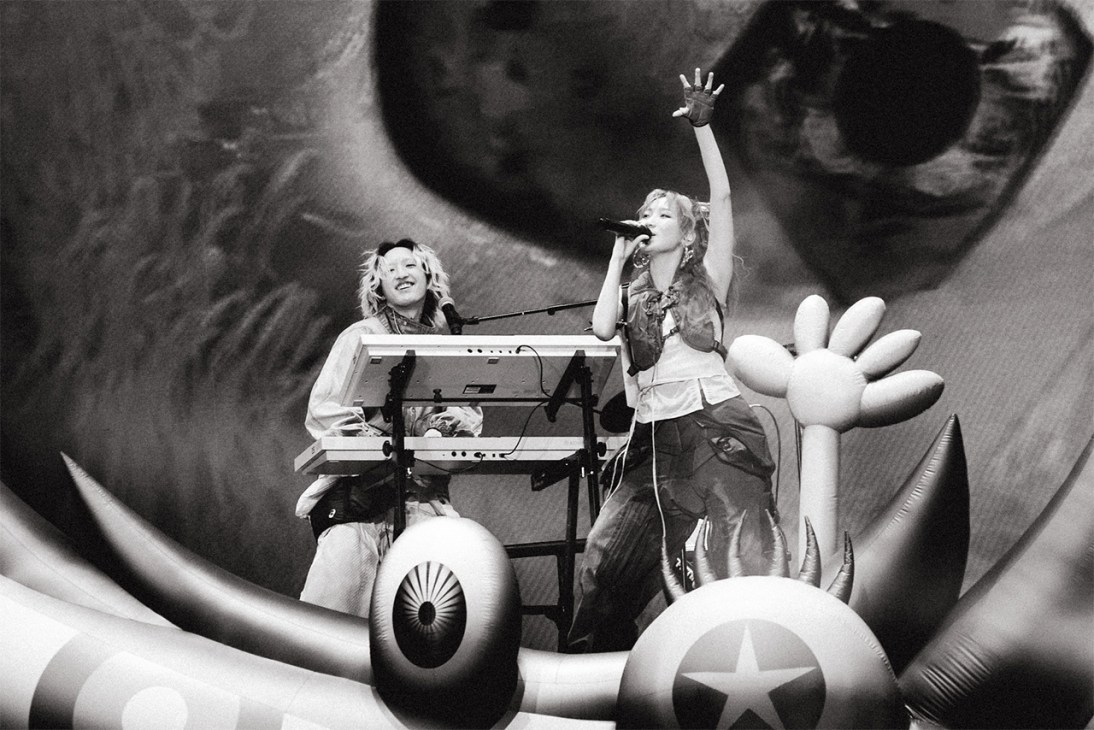
You are the first Japanese act to top the global Billboard charts. How do you feel about this success outside Japan?
Ayase: We’re extremely humbled and honoured, and very pleased with the reception. It’s something that I never expected when we started. We receive a lot of messages from fans through social media, which is wonderful. It’s nice to see their reactions when we play live as well, like we did at Wembley.
You mentioned that there’s a connection between Yoasobi and the Japanese literary scene. How central is that to your music?
A: All of our songs are based on stories. There are many different narrative mediums in Japan, such as novels, anime and manga, and they are all interconnected. Our style reflects that, which is slightly unusual, but my hope is that our listeners get to enjoy the art of Japanese storytelling as a whole.
So your music is not just pop songs but also a storytelling device?
A: We produce pop songs but always with a deeper context. Because our lyrics are based on stories, the music is much more three-dimensional. I see what we do as a new form of entertainment and we hope that our audience will get to enjoy Japanese culture through it.
What influences have shaped your compositions and songwriting?
Ikura: I grew up listening to Japanese musicians such as Arashi, Yui and Ikimono-gakari, who were all frontrunners at the time. Rock band Radwimps was a big influence too. My parents’ musical tastes had an effect on me – they introduced me to artists such as Yumi Matsutoya and Southern All Stars.
A: I have been greatly influenced by the J-pop scene, as well as folk songs. I listen to Yumi Matsutoya as well but musicians such as Maria Takeuchi and Toshinobu Kubota also come to mind. I also love Japanese R&B and hip-hop.
You can listen to the full interview with Yoasobi on the latest episode of ‘The Monocle Weekly’ here.
Copenhagen’s 3 Days of Design has once again transformed the city into a vibrant, walkable showcase of Danish and international creativity. This annual design festival draws industry leaders, buyers, press, and enthusiasts eager to explore new collections and discover emerging talents. It’s a vital platform for both business and inspiration, setting the agenda for contemporary design. Here are three highlights from Day 1.
1.
The Salon: Other Circle
Design is everywhere: just ask Silas Adler, creative director of new design salon Other Circle. Debuting alongside 3 Days of Design at The Lab, a vast industrial venue in the northwest of Copenhagen, the aim of the showcase is to explore how the realms of design, art, music, food and fashion often overlap. “The boundaries between creative disciplines are dissolving and the way that we engage with culture is shifting,” he says. “There’s a need for spaces that reflect this fluidity. Creatives are questioning the old models and pushing for something more connected, more alive.”


The breaking down of industry barriers is already commonplace in Milan, where luxury fashion houses take over the city’s design week. But Copenhagen has maintained a more siloed approach – at least for now. Adler’s background in the fashion industry (he co-founded streetwear brand Soulland in 2002) might explain this desire to do away with the rule book and shake up the Danish design scene.
The programme at Other Circle features more than 50 participants, including local food institutions Atelier September and Noma Projects, as well as Berlin-based Lotto Studio and Reidar Mester (pictured above, top), Stockholm-based Joy Objects (above left) and Italy’s Meritalia (above right). It’s an eclectic line-up that’s sure to delight. “That’s what my team and I want to focus on,” says Adler. “Joy and inspiration.”
othercircle.com
Other Circle runs until 20 June, from 09.00 to 19.00, at The Lab, Vermundsgade 40B, Copenhagen.
2.
OEO Studio X Time & Style
At 3 Days of Design, Copenhagen-based OEO Studio, known for its refined interiors and considered product work, joined forces with Japanese furniture maker Time & Style, celebrated for its craftsmanship and fresh perspective on materiality. Their joint showcase brings Japanese and Danish aesthetics into quiet harmony. The Kouryu chair – a tactile piece featuring a sculptural wooden frame and a plush tatami seat – is case in point. Here, OEO Studio co-founder Thomas Lykke and Time & Style co-founder Yasushi Yoshida reflect on their collaboration and a shared pursuit of care in working with wood.
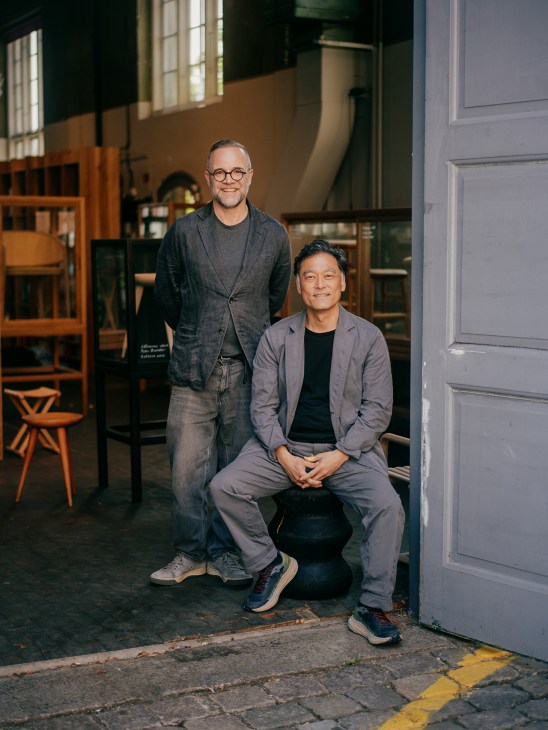
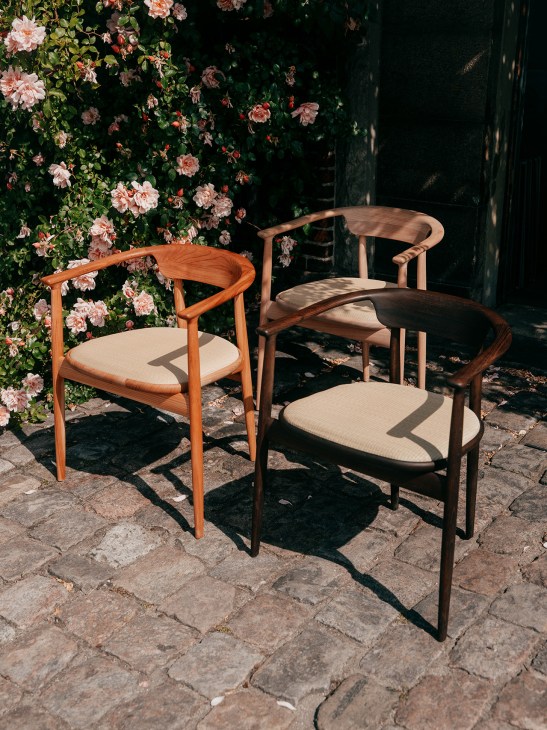
Tell us about the role that timber plays in your work.
Yasushi Yoshida: Japanese timber is available on the market but at Time & Style we buy directly from the forest. We have a personal relationship with the forestry people, so they contact us if wood is available. We then move the timber to our factory to dry for one or two years.
Thomas Lykke: It’s important to remember that the forest is not here for us – it’s the other way around. As a designer, it’s valuable to respect that a piece of wood is not just a piece of wood – it had a living spirit before. You have to respect that when you turn it into furniture.
What considerations shape the way that you select and use timber?
YY: It’s trendy to use oak from Hokkaido, where our factory is based. We source a lot of our timber from there and are competing with companies from across the globe who come to buy oak because it’s rich in tannins for wine and whisky. Then there’s tall-growing zelkova hardwood, the timber used for big pillars in temples some 1,200 years ago. For that reason, it is seen as conservative to use zelkova in modern Japanese homes. Until two or three years ago, we did not have dry zelkova wood but we sourced it from Honshū. It’s still rare.
The Kouryu chair that you co-created is made from Japanese zelkova. How does this honour the material and make people want in their homes?
TL: I only learned about zelkova hardwood through Time & Style and its use in sacred temples and shrines. It is seen as a more conservative wood in Japan and is rarely used for furniture. I was fascinated by the fact that I had never encountered it before. I love the grain, the colour and how you can treat it. Time & Style uses natural beeswax, white soap and iron water, which draws out the acidity and makes the zelkova incredibly soft.
timeandstyle.com; oeo.dk
See Time & Style and OEO Studio’s work during 3 Days of Design at Pakhus 11, Dampfaergevej 2.
3.
Café A-N-D Bar
Canadian lighting studio A-N-D has crossed the Atlantic and set up a temporary café and bar with furniture by French maker Boon Editions. As part of this group showcase, Irish glassware brand J Hill’s Standard is making its Copenhagen debut. “The fair has a reputation for being a smaller show that has long reach,” says Ava Kelly (pictured below right with Lukas Peet, co-founder of A-N-D), who helms J Hill’s Standard alongside her mother, Anike Tyrrell. “It’s also more digestible and community-based than some of the larger festivals, which have become behemoths.”

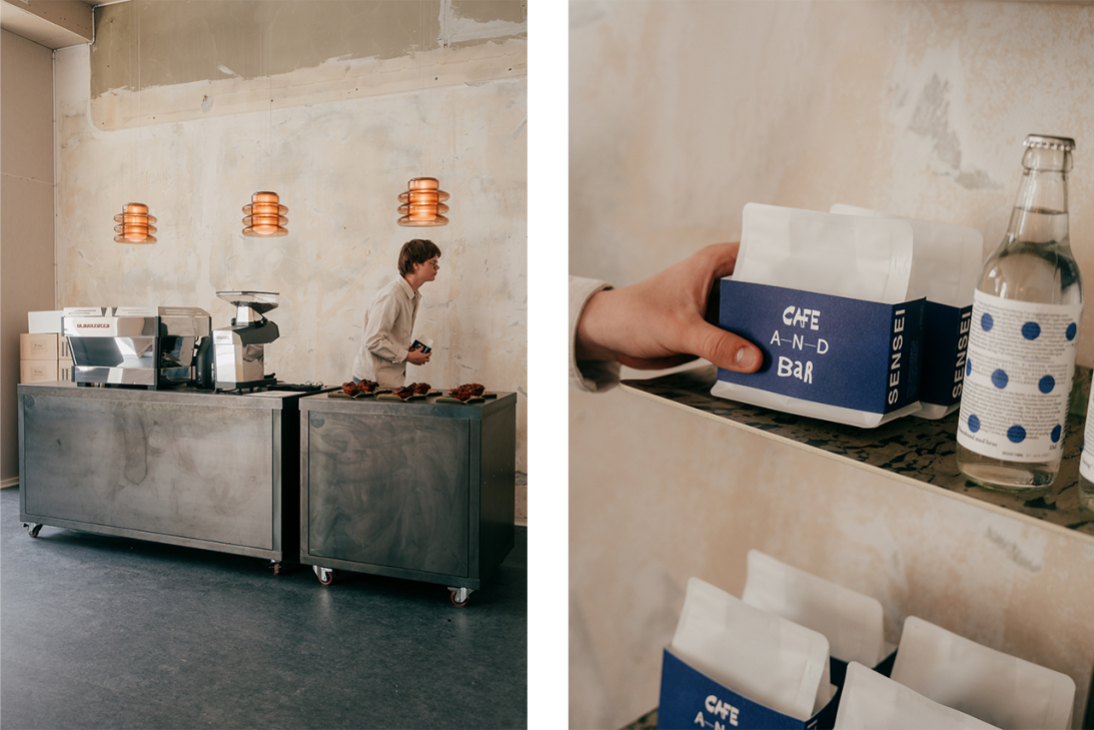
Titled Cafe A-N-D Bar, the hospitality-oriented setting allows for made-in-Ireland glassware to be admired in use, be it a nifty carafe-and-glass set by Amsterdam-based designer Aldo Bakker or tumblers by Irish architect Nigel Peake. “It’s an opportunity to highlight the functionality of our products and the joy of creating considered environments for our daily rituals,” adds Kelly. “Who wouldn’t want to sit on a Boon Editions sofa with our tumbler in hand, sipping a cheeky whisky under the gentle illumination of an A-N-D light?”
a-n-d.com; boon-editions.com; jhillsstandard.com
‘Cafe A-N-D Bar’ is open to the public until 20 June, from 10.00 to 19.00, at Studiestraede 34, Copenhagen.
“Everything is designed,” Norman Foster tells me, sitting in a Venetian Palazzo that’s flooded with natural light. “This means that nothing happens by chance. A building or infrastructure is either designed badly and without too much thought, or it’s designed well.” I’m speaking to the Pritzker Prize winning architect at the Venice Biennale and we’re discussing the link between the built environment and quality of life.
It’s a topic that Monocle has always dedicated its July/August issue to and 2025 is no different. Our approach to the subject differs slightly from other media outlets and research institutions, which tend to focus on hard metrics: average income or crime rates. These are important but we’re also interested in how architecture and infrastructure change how we feel about ourselves and our cities. We seek to answer questions such as: does the local library lift our spirits? Or, is public housing not only available but of a quality that makes people proud to live in it? As Foster says, “We know that we can improve the quality of all our lives through design. We can do this by designing for our pleasure and enjoyment.”

Case in point is the project that Foster is presenting at the biennale in partnership with German automaker Porsche: a floating bridge and pontoon, with a shimmering shell enclosing a dock for water bikes and motorboats. Both the kinetic nature of the structure and the novel form of transport are intended to bring a sense of play to the lagoon city’s infrastructure.
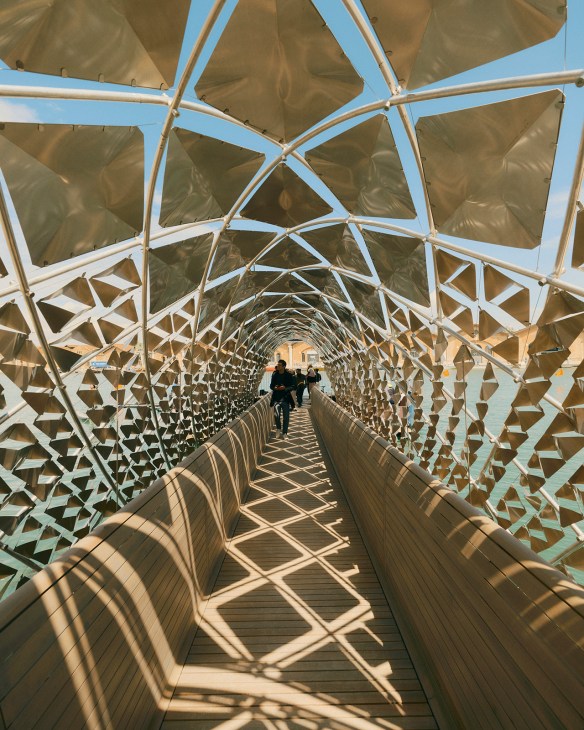
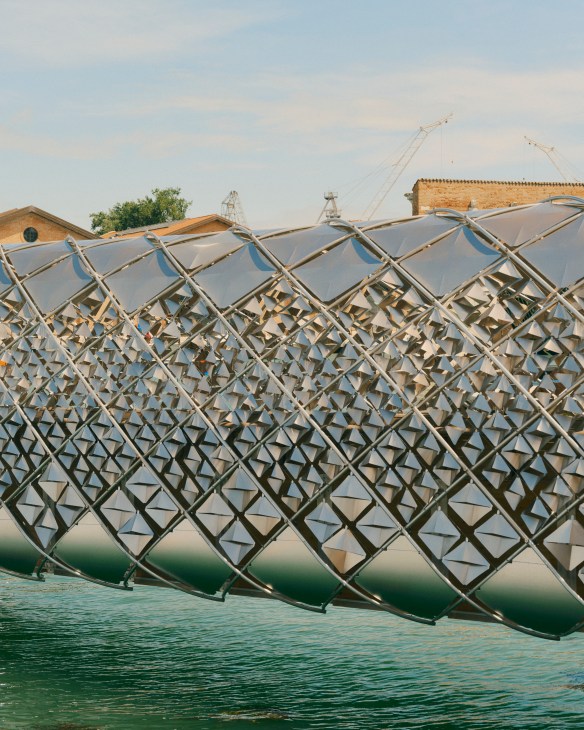
It reflects an ethos that can be found across Foster’s portfolio which, despite being exceptionally functional, expresses much novelty. There is London’s 30 St Mary Axe, known as The Gherkin, which challenged the convention of office buildings; and his Reichstag renovation in Berlin, with a glass roof on which the public can walk – a masterstroke of democratic symbolism. All are much celebrated and a reminder that quality of life is about more than economic policy and statistical indicators. It’s also about looking at how we can bring moments of joy and pleasure into our lives.
Singer-songwriter Giorgio Poi hails from northern Italy but he found his groove in his twenties when he was living in London and Berlin. After releasing his debut Italian-language record in 2017, he found fans and friends in the French band Phoenix and went on tour with them.
Now, Poi is back with his fourth album, Schegge, a fitting soundtrack to hot summer days spent floating across a swimming pool. Monocle caught up with him during the London leg of his tour to find out about his favourite songs, his musical influences and which Italian beaches we’ll find him on this summer.
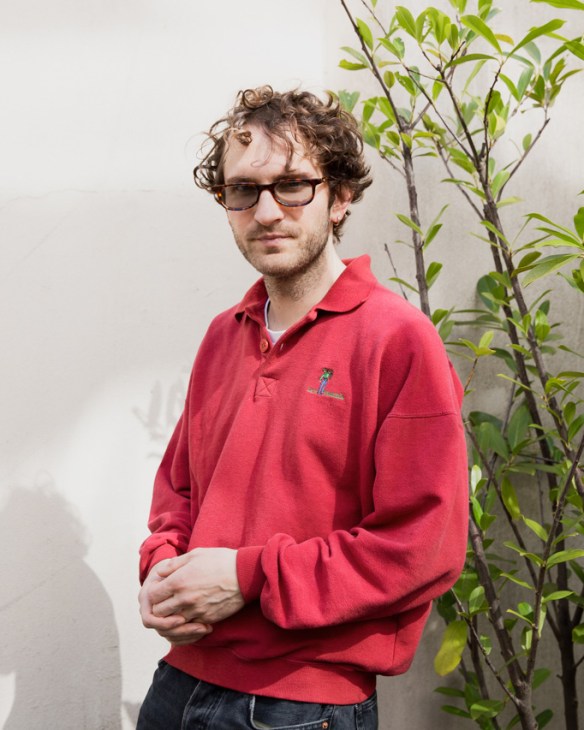
Are you inspired by the summertime?
The sun has been part of my life for many years, except for when I was living in London. And, in those years, I missed it. I always felt this attraction towards the summertime; towards sunny places. I didn’t really have that before I lived there. Quite the opposite; I was attracted to gloomy weather.You always want the opposite of what you have.
Tell me about the title of your album, ‘Schegge’ [‘Shards’].
When there’s an explosion, there are shards everywhere.The idea is that, with the Big Bang, everything started to explode – and it is still exploding.We’re in the middle of it. We live our lives – we are born, we have kids of our own, we have friendships and relationships.There are people we love. Many things happen in life but I like the fact that we are all exploding together. It makes me feel like I’m part of something.
The song ‘Nelle Tue Piscine’ stands out to me.What’s it about?
In that song, the idea of swimming in a pool is applied to a relationship.When you’re with someone, you’re swimming in waters that you know well. They feel comfortable and have just the right temperature. But at some point, you might realise that you need more ocean around you and you might decide to go and face the waves. It’s about exploration.There’s a lot of the sea in the album – a lot of water.You could say that it’s a liquid record.
Do you have a favourite song on the record?
I like them all the same once I have reached a point where I’m satisfied and they’re done. It’s a difficult relationship with songs that you’ve written and you’veloved and hated while you were in the process of working on them. There’s one called “Un Aggettivo, Un Verbo, Una Parola” which I quite like these days. But tomorrow it will be a different one.
Who are your musical influences?
Growing up, my parents listened to Lucio Dalla, Francesco de Gregori and Fabrizio de André. They are classics and I think that they’re great, both musically and lyrically.
Are you excited for the summer and performing songs from your new album?
This is my fourth album, so the show right now is a selection of what I’ve done over the years. And we’ll play the whole of the new album – every song is in the show. It’s fresh and we haven’t done it before, so it’s exciting for us.
Where will we find you this summer?
My uncle has a small flat in Monte Argentario, Tuscany, so I’ve been going there for a few years. I like it but the Italian seaside does get busy in the summer.
‘Schegge’ is out now
It’s all about context and working together at 3 Days of Design. That’s the message being hammered home at this year’s event, which runs until Friday and functions as Copenhagen’s de facto design week. Designers and brands present work in galleries and studios across the city and the fair has been billed by many as the biggest competitor to industry behemoth Salone del Mobile – and for good reason. It has grown year-on-year since its establishment in 2013 and is now drawing an international cohort, with Spain’s Santa & Cole and Italian firms such as Flos and Alpi all taking part.
Here are my highlights so far:
1.
Kvadrat & Vitra Café
Danish textile brand Kvadrat has teamed up with Vitra to transform its showroom into a pop-up café. The space showcases Vitra’s new collection of furnishings upholstered in Kvadrat textiles. “We share the same considered approach to our craft,” says Kvadrat’s Njusja de Gier, who manages collaborations for the brand and led the installation. “We have also shared a showroom in Copenhagen for years; it’s a long-term partnership that we want to celebrate.”
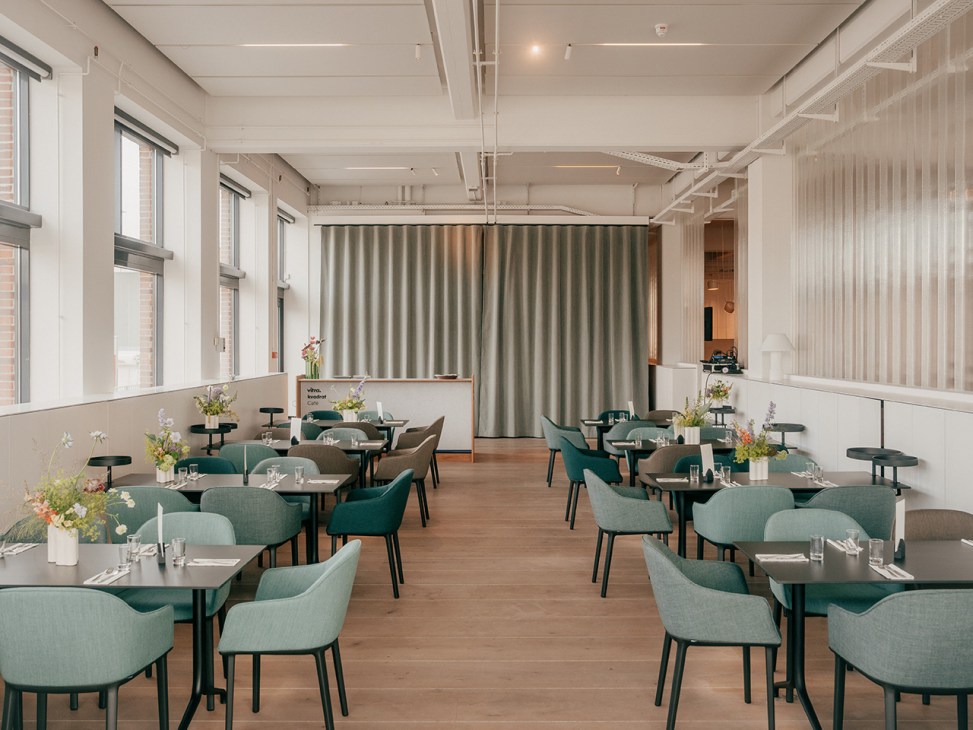
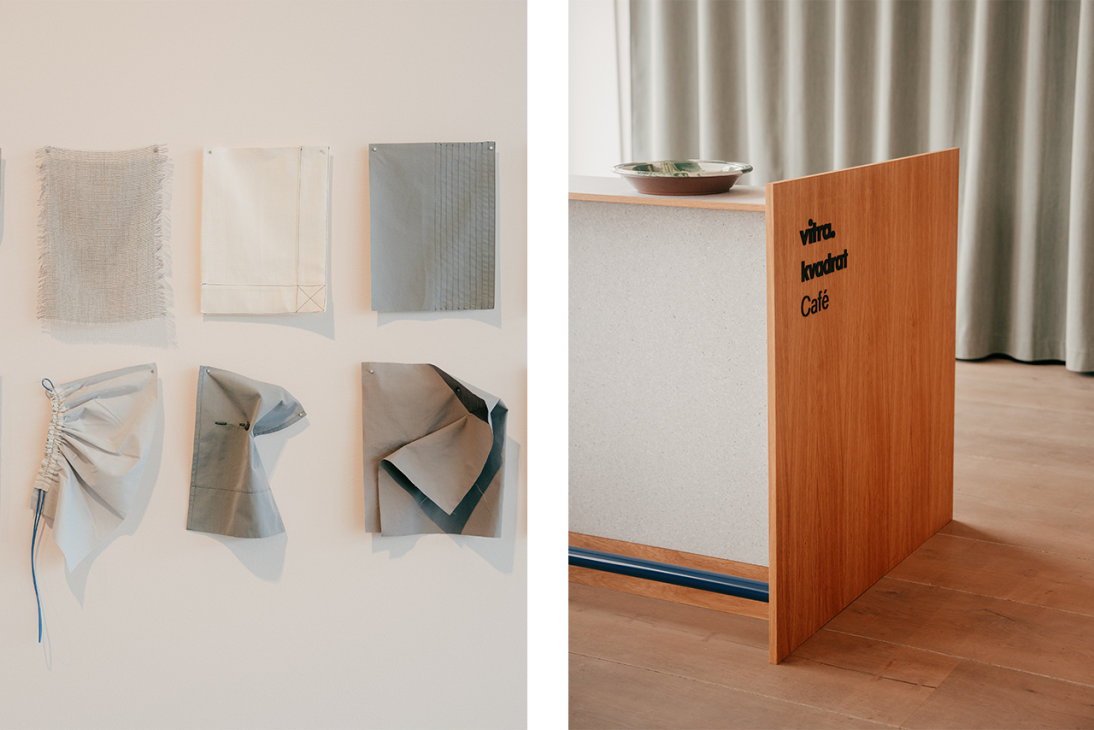
Over the course of 3 Days of Design, both businesses will use the space to host clients for meetings and lunch, while also allowing visitors to experience their products in a practical setting. “It’s the perfect way to bring our brands to life,” says de Gier.
The café was created in collaboration with Danish chef and cookbook author Mikkel Karstad. Known for his work in Michelin-starred kitchens, Karstad has refined a seasonal approach to cooking, focusing on simple, ingredient-led dishes that highlight the natural flavours of fresh produce, whether for breakfast, lunch or aperitivo.
kvadrat.dk, vitra.com
The Kvadrat & Vitra Café is open to the public at Klubiensvej 22, 2150 Copenhagen until Friday 20 June.
2.
Structures of Living by Frama
Frama’s Structures of Living exhibition, which is on show during 3 Days of Design, is an exploration of modular interiors that rethinks how we live, work and gather. Reimagining its flagship shop as a gridded environment, the exhibition brings together everyday functions such as sleeping, dining and relaxing into a single, flexible system. “It’s an invitation for a conversation about alternative living in a bigger context,” says the brand’s founder, Niels Strøyer Christophersen.
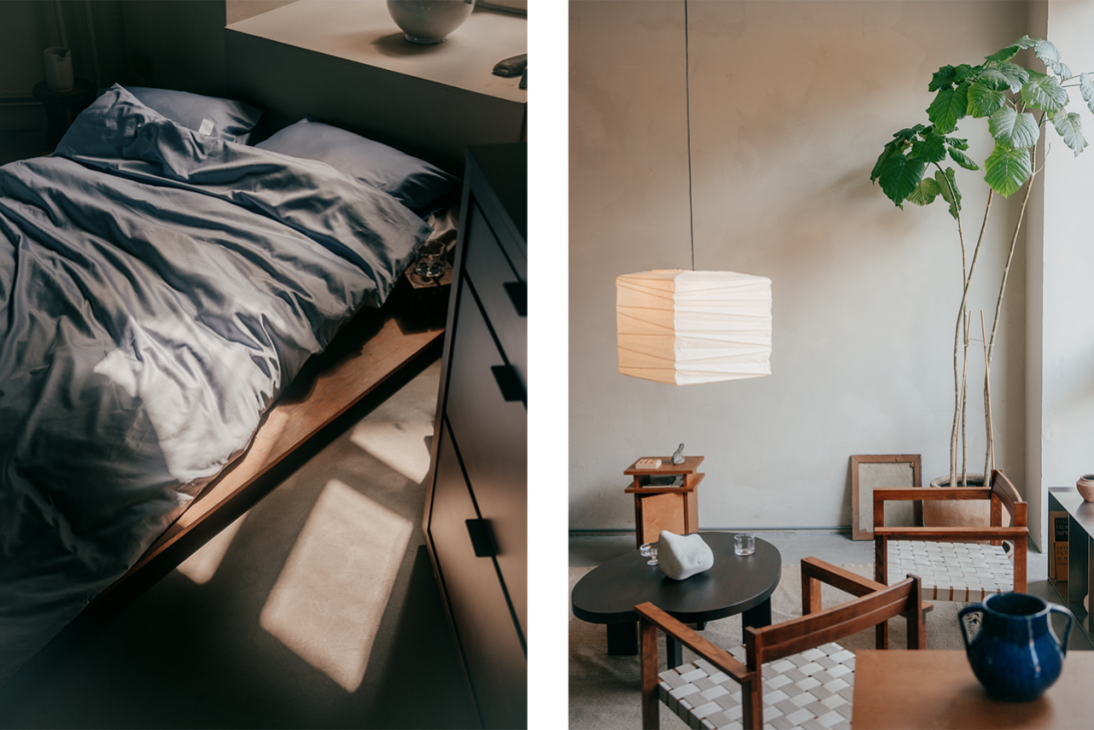
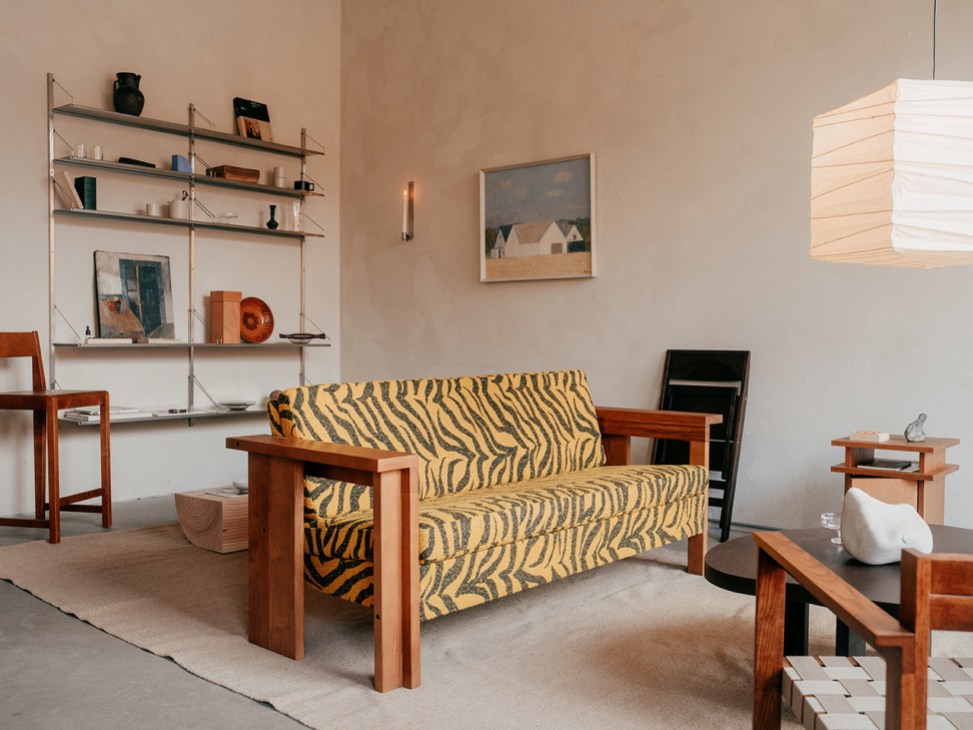
Conceived as a spatial enquiry rather than a traditional showcase, the installation’s interconnected interior reflects Frama’s ongoing interest in multi-use design and holistic living. It’s an exploration that continues at the brand’s gallery (adjacent to the flagship), which has been transformed into a “lived-in” apartment, where furnishings from Frama’s growing catalogue are not merely displayed so much as meant to be interacted with. “Our relationship with our surroundings and community is becoming more and more essential in today’s world,” adds Christophersen.
To complement these showcases, Frama is releasing new furniture across three of its families, including stainless-steel chairs and stools, lounge chairs with beige webbing seats, a range of wooden side tables and a sideboard with a simple, geometric expression.
framacph.com
‘Structures of Living’ is open to the public until 22 June at Fredericiagade 57, Copenhagen.
3.
Petra Hotel by & Tradition
Copenhagen’s hospitality scene is being buoyed by its newest opening: Petra Hotel. The new 40-key boutique outpost, created by Danish furniture firm &Tradition and Copenhagen Design Hotels, opened its doors to guests for the first time during 3 Days of Design. At its heart is a restaurant and bar. “From the beginning, we talked about this idea of having a space that’s open all the time,” says Hannah Jordan, the firm’s head of spatial design. “It’s somewhere that people can visit between late afternoon and early evening for a drink or a coffee.”
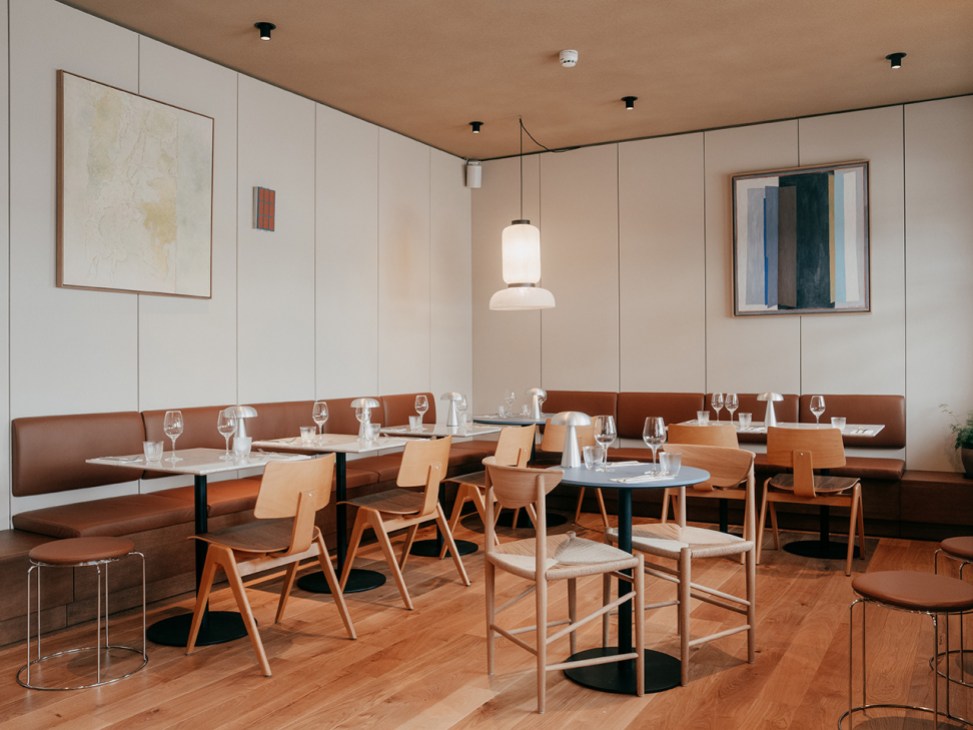
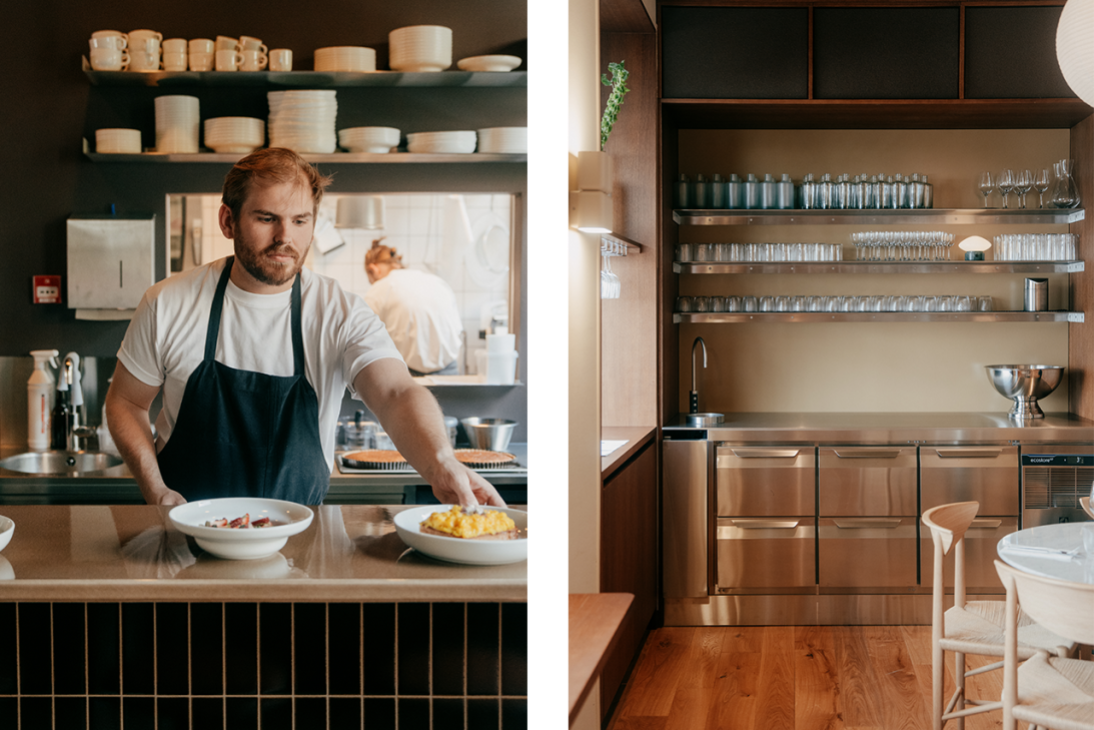
The interiors also reflect the local neighbourhood, with many of its buildings, including the hotel, designed by Kay Fisker. The Petra is located in one of the mid-century architect’s structures from 1943, which has been meticulously restored, preserving distinctive details such as its original terrazzo and handcrafted brass fittings.
“The wall colours are an exact match of those used in Fisker’s other apartments and spaces,” adds Jordan. She also explains that the furniture selected for the project was chosen based on whether it would work with the colour scheme. Those looking to experience the space for themselves will do well to book a stay, find a seat at chef Søren Westh’s restaurant or attend one of &Tradition’s talks during 3 Days of Design.
andtradition.com, hotel-petra.com
Located at Dronningens Tværgade 45, Petra Bar & Restaurant is open every day for breakfast and lunch.
“The Choice of Sovereignty”, “Protecting Democracy” and “Ready for the Unknown”. Not a promotional campaign for the US Navy Seals but rather the slogans that were emblazoned on chalets and billboards belonging respectively to Dassault Aviation, Helsing and Airbus at this week’s Paris Air Show. Though only about a third of the 2,400 brands exhibiting this year are from the defence sector, the atmosphere at the show is decidedly militaristic. The fair has been on a hawkish turn since Russia’s full-scale invasion of Ukraine in 2022 and the recent fraying of security ties between the US and Europe has kicked things up another notch. For anyone in attendance who still doubted that times had well and truly changed for Europe’s defence industry, the tarmac at Le Bourget offered an unequivocal reality check: a giant Airbus A400M Atlas military transport aircraft, all of Thales’s new radar systems (including the Ground Fire 300 that can track up to 1,000 targets simultaneously) and a veritable arsenal of missiles.
Despite the presence of these big hitters, drones were the star of the show. Scores of unmanned aircraft were on display, capable of everything from medical deliveries to long-range airstrikes on the battlefield. In an era when, as one high-ranking European military officer told me, “a $100 toy can destroy a $100m plane,” the relationship between warfare and aviation is being reimagined. In the future, expect to see drone swarms deployed around the next generation of fighter jets, ready to serve as projectiles or sacrificial shields.

This is not to say that defence fully eclipsed commercial aviation at the Paris show. With Boeing focused on managing the fallout from the crash of a 787-8 Dreamliner in Ahmedabad, long-time rival Airbus came out swinging, with new deals worth $10bn (€8.6bn) to sell 132 planes to Saudi Arabia, as well as Polish and Japanese operators. The Saudi deals, including 25 A350-1000s for Riyadh Air (an airline that has yet to fly), are emblematic of a bullish commercial-flight industry that still expects to enjoy at least 4 per cent growth each year for the foreseeable future – especially in ambitious markets looking for an edge on their regional rivals.
“I wouldn’t be surprised if something similar to what has happened in the fashion industry took place in the commercial-aviation space,” one industry insider told me at the Aéroports de Paris chalet. “The market could become dominated by low-cost airlines on one side and premium players on the other, with not much wriggle room in the middle.”
Bouvier is Monocle’s Paris bureau chief. For some longer-haul reading, fly over to our take on how Romania’s aviation gamble could reshape the nation’s global standing and the hop-on, hop-off jet service disrupting short-haul flights, via the way Andalusia is providing a clear runway to major players in the aerospace industry.
While Japan’s more than 50,000 convenience stores – konbini – are an indispensable part of daily life, they’ve tended to stay away from the realm of fashion, beyond offering clean underwear or perhaps an emergency shirt and tie. That all changed in 2021 when FamilyMart – operator of nearly 16,300 convenience stores in Japan – teamed up with the Tokyo fashion designer Hiromichi Ochiai to launch its own intuitively named label, Convenience Wear. The range debuted to instant success. Its unisex crew socks – white with stripes in FamilyMart’s signature green and blue – flew off the shelves. Worn by everyone from school children to the fashion set, more than 1.4 million pairs were sold in a year and the line won a coveted Good Design Award. Convenience stores had never been seen as cool and the new brand’s desirability was a shock to the system.
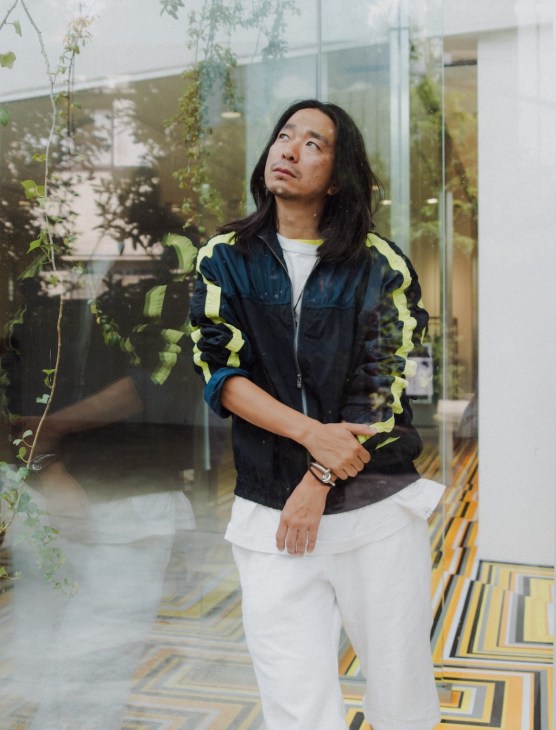
From the outset, Ochiai intended Convenience Wear to be a simple proposition, in keeping with the universality of the convenience store. The decision to start with socks, the most basic staple, was easy. “In Japan, konbini represent this feeling of cleanliness, stability and safety,” Ochiai tells Monocle. “So, I wanted to express this very clean image and the sock seemed to be the ideal vehicle. Plus, everyone knows the brand’s iconic colours.” The socks emerged as the hero product: cheap but well made with a thick pile, they’re also antibacterial and deodorising.
Ochiai, who has had his own fashion brand, Facetasm, since 2007, also had a clear vision of how he wanted Convenience Wear to appear on the shelves. “In the context of the convenience store, we knew that the design would have to be seen and understood immediately by people of all ages, occupations and nationalities,” he says. Ochiai worked with graphic designer Takahiro Yasuda and his collective, Cekai, to come up with a bold style that stands out among the hundreds of other products. “I requested that the information should be easy to understand and readable in katakana, kanji and English.”
The tough, clear-plastic packaging is designed to be reused. “Reusability can be difficult with mass production,” he says. “But I thought of a style that could be opened and resealed.” The packaging also protects the products from wear and tear. “Between the 24-hour-a-day lighting and the dust, a konbini is a very difficult environment for selling clothes.”
Initially the range was limited to the socks and a few essentials – men’s undershirts, women’s tank tops, eco-bags and small hand towels – but the simplicity of the line’s design and purpose has made it easy to expand. You might find sweatshirts, stationery, handkerchiefs, packable nylon jackets and long-sleeved cotton T-shirts.
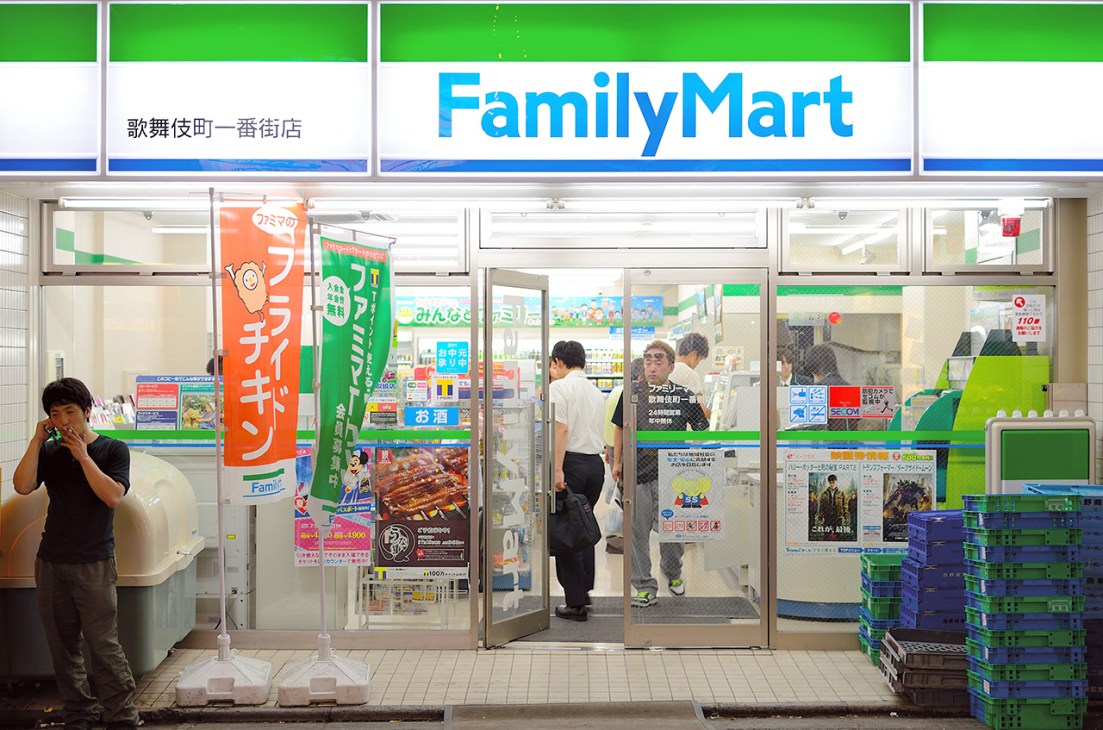
Ochiai’s own status in the fashion world has made it easier to find collaborations too. The oversized T-shirts made with Akio Hasegawa, a longtime Monocle stylist, and his brand, Cahlumn, sold out in no time. At the Fuji Rock Festival, staff wore Convenience Wear T-shirts and there were special-edition socks and hand towels.
Convenience Wear’s hand towels are made in Imabari, the towel-making centre of Japan. “We’re not particularly focused on ‘made in Japan’,” Ochiai says. “But for the way we wanted to make the pieces and the ability to introduce new colours, Imabari just made sense – they could make high-quality pieces quickly.” Ochiai, who studied at Bunka Fashion College, is bringing his fashion sensibility to the less-than-fashionable shelves of the convenience store. One striking thing about the brand is its unusual colour palette. The basic blacks, whites and greys are all there but they are punctuated with sophisticated pops of colour that call for the confidence of a seasoned designer.
“We use the brand to communicate,” says Ochiai. “When it’s winter, we might use warmer colours to indicate that spring is on its way. With Fuji Rock Festival, we used optimistic neon colours to reflect that it’s a friendly, family event.”
Ochiai’s own brand, Facetasm, is nothing like Convenience Wear – it’s far more directional and beloved of fashion followers. But he knew what this project called for. “Boys in Japan have always looked at magazines and shops for ideas and trends; I think that the convenience store could be a similar tool,” he says. “We’re trying to build a new konbini culture.” Convenience Wear also reflects Japan’s particular style mix – an inimitable blend of high and low.
FamilyMart made another unexpected move earlier this year when it announced that streetwear supremo Nigo – of A Bathing Ape and now Human Made fame – was now on board as the wider company’s creative director. Nigo isn’t involved in the Convenience Wear project but his arrival points to an awareness that the konbini occupies a unique space in Japanese society; the ideal place to catch the attention of the broadest audience possible. Ochiai says that it’s the democratic nature of the convenience store that makes his concept work. “FamilyMart talks about ‘loving yourself’, buying something for yourself in your own time and at your leisure.”
Given the number and ubiquity of FamilyMarts around Japan – something with which no fast-fashion company could compete – the potential for Convenience Wear is huge. “We are already effectively the world’s largest clothing shop,” says Ochiai. The brand strayed into fashion territory with a one-off runway show in 2023, which prompted the creation of a prototype denim jacket. Ochiai, who oversees the creative direction of every product, would love to design trainers but he’s always careful to keep Convenience Wear on the functional side. An accessible price point is key but at a level where the quality still remains high.
The next challenge could be to create a Convenience Wear flagship. But how to improve on the existing FamilyMart shops? They’re accessible to all, 24 hours a day. Ochiai keeps an open mind. “Nobody has tried to do what we’re doing in a convenience store,” he says. “It’s a new experience. I’m constantly experimenting with fresh ideas.”
FamilyMart in numbers
16,295
Number of FamilyMart shops in Japan (8,412 overseas)
1973
Year of launch
15 million
Daily customers (in all shops in Japan)
¥3.2trn (€19.6bn)
Annual sales (fiscal year: March 2024 to February 2025)
This article originally appeared in the Opportunity Edition newspaper 2025, created in collaboration with UBS for its Asian Investment Conference in Hong Kong.
The Netherlands and Denmark have much in common: both are rich, flat, windswept, laboriously democratic and industriously agricultural. Plus: bicycles. But there is one aspect where they have diverged in the past 20 years. Denmark became an improbable global culinary mecca. The local, seasonal New Nordic movement began with René Redzepi’s Noma and ended up inspiring a generation of chefs to forage, ferment and interfere with celeriac in elaborate ways. As with haute couture, New Nordic trickled down to the high street and so Danish supermarkets turned organic and introduced the populace to new products such as spelt and wild garlic.
Meanwhile, the Dutch food landscape remained a wasteland, so much so that my family and I holidayed there last year precisely because they knew that I wouldn’t be distracted by trying to find nice things to eat. In my head, there is always a better restaurant just around the corner and it’s a notion that has tormented my family for years.
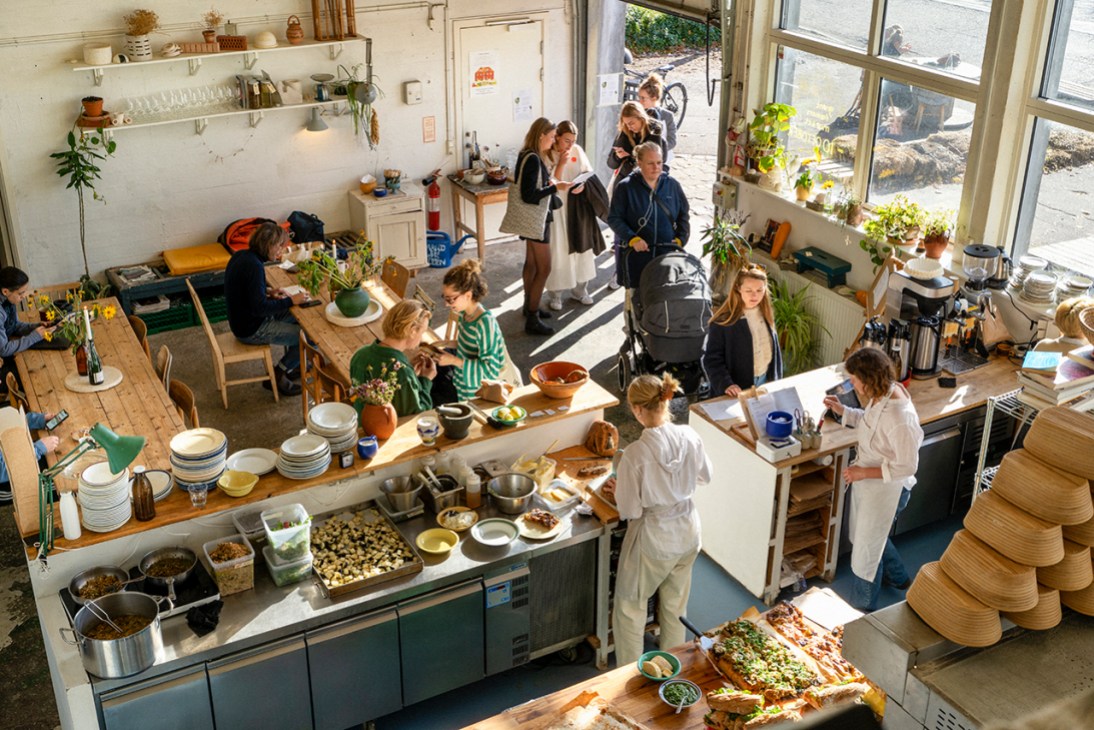
Now, though, the Danes seem to be reverting to type. Beyond a couple of dozen properly wonderful restaurants – nearly all of which are in Copenhagen – the food landscape here is becoming quite lamentable. Beyond the capital, restaurants still serve stuff that they buy frozen in bags. Judging by the products that occupy the most real estate in supermarkets, the Danes are surviving on Dr Oetker’s frozen pizza and processed pork. Fresh produce has taken a drastic dive in quality over the past couple of years: hard, sour peaches are the latest abomination to join water-filled chicken, bendy leeks and suspiciously coloured salmon fillets on the shelves. Today virtually all of the supermarkets in Denmark are low budget; independent fishmongers, grocers and butchers are effectively extinct.
“The disparity between the restaurants in Copenhagen and what you see in the supermarkets is horrible – and it’s getting worse,” TV chef Adam Aamann (the man who transformed the classic Danish open sandwich two decades ago) told me recently. “Often, I go to the supermarket and I think, ‘I need to take photos of this and post it online’.”
Adam and I pondered the reasons for the regression in Danish food culture. Has Covid numbed our tastebuds? Was inflation behind the decline in organic consumption? He blamed the supermarkets which, he pointed out, have a stranglehold over the Danish grocery market. With a captive clientele, they simply don’t need to worry about quality or diversity of produce: they compete purely on price.
But I have another theory. As with the Dutch, might there still linger a latent distrust of sensual pleasure, a Lutheran disapproval of hedonistic indulgence, deep in the Danish soul? René Redzepi once told me that his fellow Danes consider food as fuel; he believes that their attitude is rooted in their parsimonious Protestant past. I thought that he was exaggerating, or at least that things were changing for the better, but it appears that I was wrong.
Recall Karen Blixen’s short story, Babette’s Feast, set in a pious 19th-century Jutland community scandalised by a French émigré who lavishes her guests with “sinful” gourmet food. What has changed?
This is also the nation that more recently invented Wegovy, a product intended to deny its user sensual pleasure; a drug created to stop people eating. Novo Nordisk needn’t have gone to all the trouble of harnessing that vindictive little GLP-1 hormone to curb our gustatory desires: Danish supermarkets are taking care of that all by themselves.
Booth is Monocle’s Copenhagen correspondent. While the majority of supermarkets suffer, some are doing things right – here is our rundown of the world’s top five. Still hungry? Monocle’s 10-point plan details how to make them feel inviting again.
Every summer the shores of Lake Geneva come alive with the music of the Montreux Jazz Festival. Created in 1967 to put the small town of Montreux on the map, the festival has evolved into an event hosting some of the world’s best and biggest artists in an intimate, picturesque setting.
Here the festival’s director, Mathieu Jaton, shares what makes Montreux a special place for a music event; who makes up the crowd; and the performer he’s most excited to see.
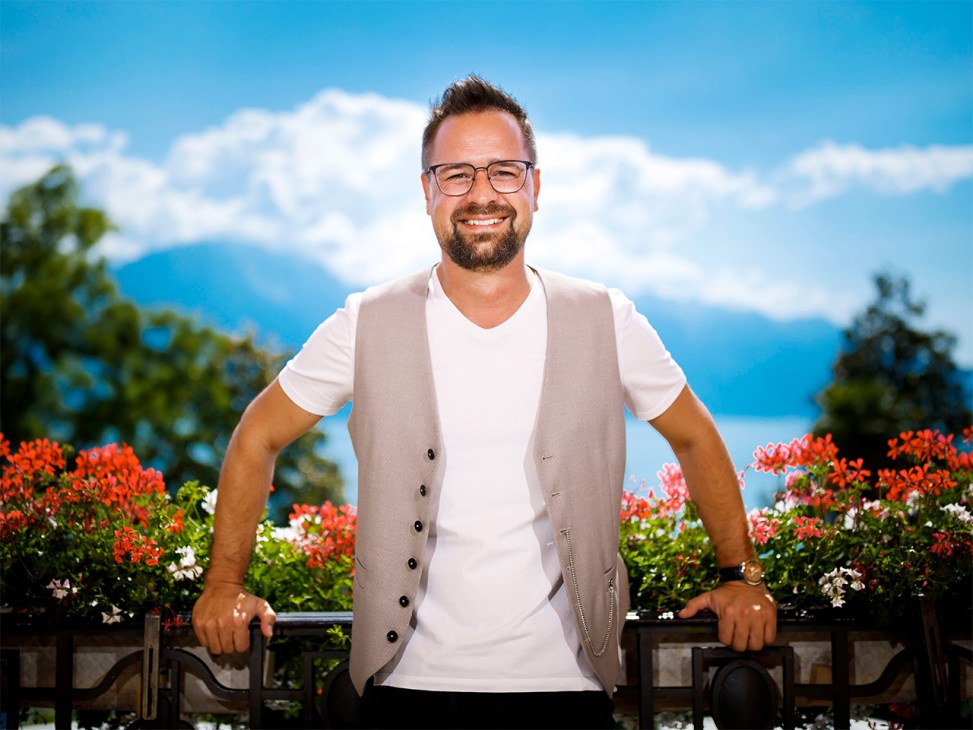
You recently announced Grace Jones as an addition to this year’s line-up, joining the likes of Chaka Khan, Raye and Lionel Richie. How do you decide on the programme?
We’re not like Glastonbury or Coachella, where you could have 100,000 people a day. The Lake Stage, which has a capacity of 5,000, provides an intimate experience with big-name acts. The goal is to create a line-up that merges the festival’s DNA with American soul legends. It’s something that we have achieved this year with Chaka Khan, Lionel Richie and Diana Ross. Quincy Jones, who co-produced the festival for three years, is essentially the godfather of the event. It is important for us to have Chaka Khan make a tribute to him. That said, it’s also crucial to have a range of music, from hip hop and rock to pop. Legends such as Neil Young and Santana star alongside Benson Boone, FKA Twigs and Noah Kahan. We want to lead the audience in the discovery of artists that they might not have heard of before, especially in Switzerland.
What kind of experience are you creating for the artists?
We are not an open-air festival with 20 stages. You need to buy a ticket for every concert, so it’s important to create a story behind each set and an opportunity for the artist to do something different. Chaka wanted to do something special for Quincy and that’s exactly what we love. Another very important feature on the line-up is the double bill. It’s not like an opening act or a headliner – it’s two main acts. The pairing isn’t obvious when you see the names together but when you dig deeper into their music, you understand. Take Hermanos Gutiérrez and The Black Keys. In terms of style, they have nothing to do with one another. But when you know that Dan Auerbach [the vocalist of The Black Keys] has produced the last two Hermanos Gutiérrez albums, having both bands on the line-up makes more sense. I wouldn’t be surprised if Dan joins the brothers on stage for a song.
Are you expecting a large number of attendees from abroad?
The festival was created as a tourist tool, so attracting people from outside Switzerland has always been important. Between 30 and 40 per cent of our attendees come from abroad, which is a big number when you have a total of 250,000 visitors. It’s a significant amount for a small place like Montreux, which has about 20,000 residents. Our largest audience is from Germany, then the UK, the US and Japan. France is in fifth place, which is funny because it’s the closest country.
You would have no chance of seeing Benson Boone and Sam Fender in the UK, other than in a stadium or arena. Here you can see them on a stage with a capacity of 5,000 – it’s a unique and exclusive experience.
How important is the setting to the experience of Montreux Jazz Festival?
You’re in Switzerland, on the shores of Lake Geneva and at the foot of the Alps, which offers beautiful sunsets. Montreux has a heritage of British architecture from the early 20th century, when all the big hotels in the town were built. You can feel the spirit of The Great Gatsby here. F Scott Fitzgerald wrote part of the novel in Montreux. Strauss lived here and so did Stravinsky. Freddie Mercury, The Rolling Stones composed and recorded at the legendary Mountain Studios.
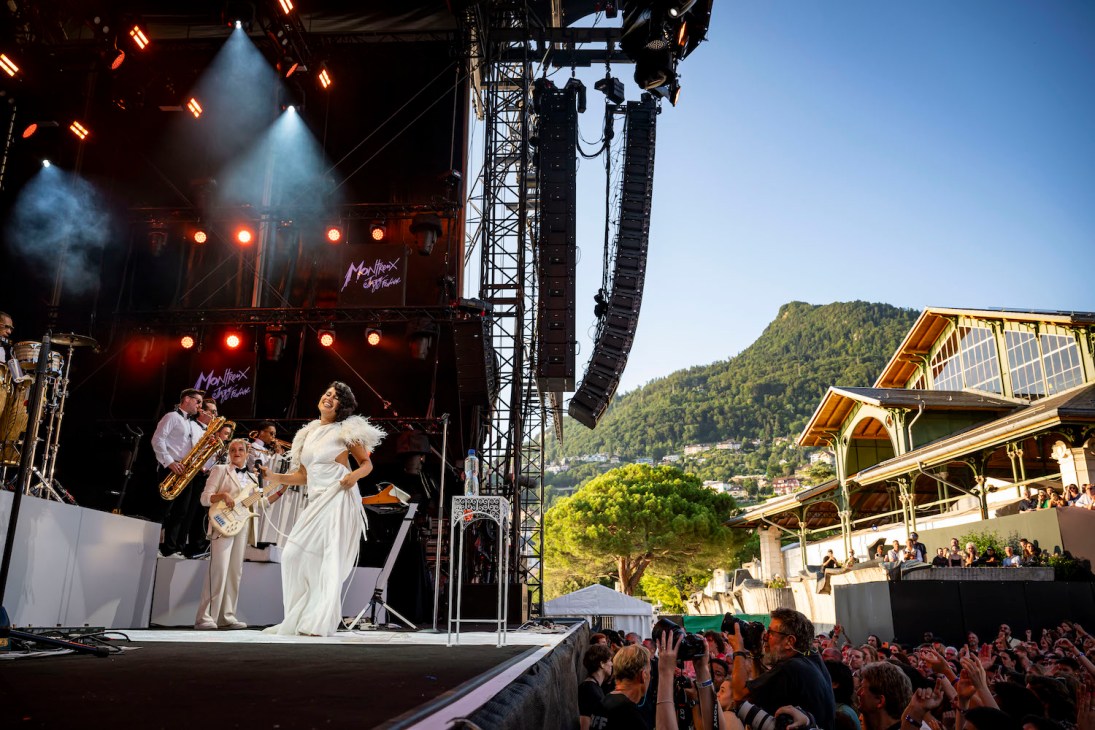
Who are you most excited to have playing this year?
There will be one big emotional moment for me — the Raye concert. Raye opened for Janelle Monáe at the festival last year and, at the time, she was just climbing the mountain. She is part Swiss and her grandfather lives here. Her performance was so emotional: she paid tribute to her grandfather and it was the first time that he had seen her on stage. Since then, she has become so big and we felt that we had to bring her back as a headliner on the Lake Stage. We normally don’t have artists perform two years in a row but we’ve made an exception for her because of her talent and her close ties to Montreux.
Israel’s initial attack on Iran on Friday was far from the first targeted blow against senior military leadership. It wasn’t even close to being the first such operation on what is now Iranian territory. In 653 BCE, the Assyrian Empire dealt with the vexatious kingdom of Elam by beheading the Elamite monarch, King Tuemman, and hanging his head from a tree – a literal decapitation strike.
Israel’s strikes on Iran, Operation Rising Lion, are nevertheless something new, enabled by the accelerating development of drone technology. A significant cohort of Iran’s military leadership – including the commander of the Islamic Revolutionary Guard Corps and the chief of staff for Iran’s armed forces – are dead, with inevitably disruptive effects upon the country’s capacities. All things considered, it also has to be imagined that persuading anyone to replace them will be a challenge
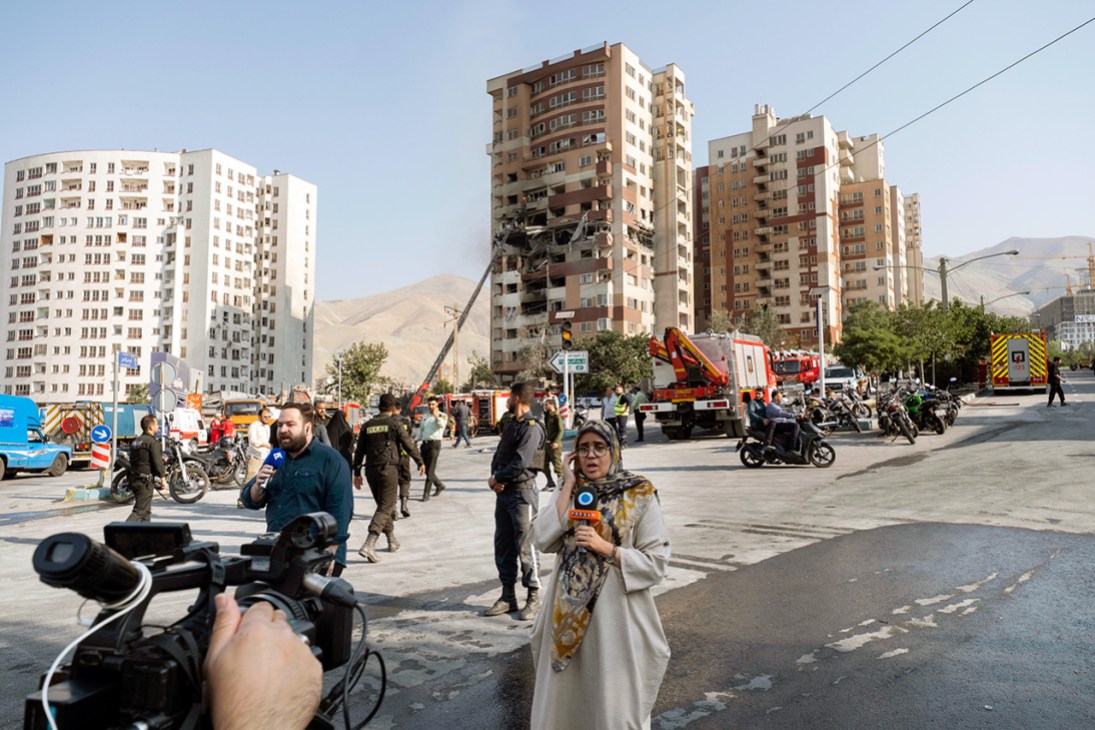
News of Israel’s strikes arrived on the second day of this year’s Globsec Forum, held in Prague late last week. Nobody was exactly astonished. There was much discussion on the first day of reports that the US was evacuating non-essential personnel from embassies in the Middle East. I suggested to one former European national leader that this could be theatrical stakes-raising posturing ahead of the next round of negotiations on Iran’s nuclear programme: “I’d be very surprised,” they replied. “You don’t do that if you’re not very serious.”
On the second day of Globsec, I asked a current European minister, not notable for their political sympathies to either US president Donald Trump or Israeli prime minister Benjamin Netanyahu, for their thoughts: “The reality,” they said, “is that nobody likes Iran.” In these circumstances, however, it is generally assessed to be unlikely that Iran would respond favourably to Trump’s renewed offer of a deal. It would be perceived as capitulation – because that’s exactly what it would be.
“Iran is not going to give up all chances of [uranium] enrichment,” Steve Erlanger, The New York Times’ chief diplomatic correspondent for Europe, told Monocle. “They’ve made it very clear that to do so would be to surrender, and that would be harder to do now. But Steve Witkoff, Trump’s envoy, has been trying to be imaginative, despite the pressure from the MAGA people around the president, to phase out Iranian enrichment – this idea of a consortium building a whole new enrichment facility on an island that Iran would share with Qatar, so that Iran can say they’re still enriching and the Americans can say no, there’s no enrichment going on. But now all this seems to be, if I can use the phrase, blown out of the water.”
Though Operation Rising Lion is new in some respects (the scale and the means of Israel’s strikes against Iran), it is not a departure from Israel’s doctrine of several decades’ standing where the nuclear ambitions of its potential antagonists are concerned. It has been 44 years since the Israeli Air Force (IAF) bombed the reactor that Iraq was building near Baghdad. It has been 18 years since the IAF bombed the reactor that Syria was assembling, with North Korean assistance, in Deir ez-Zor. And the prospect of such action has always been the unacknowledged backstop to all negotiations over Tehran’s nuclear ambitions. Iran, like a bewildering number of Israel’s nemeses across the decades, seems to have underestimated Jerusalem’s resolve.
Mueller is a contributing editor at Monocle and host of ‘The Foreign Desk’ on Monocle Radio. For more opinion, analysis and insight, subscribe to Monocle today.



